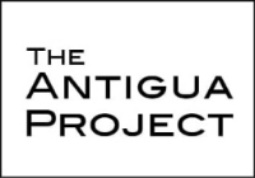FAQ
What Is The Antigua Project?
Brain-child of Rebecca Welz, artist and Professor at Pratt Institute, The Antigua Project is a collaboration between indigenous artisans of Antigua, Guatemala and NYC based artists and designers. Designers and artisans pair up to create beautiful objects and furniture using traditional weaving, leatherworking, woodworking, and other craft techniques of the region. The result is a collection of products that help preserve indigenous crafts within a modern context/marketplace.
How are we different from other international/fair trade projects?
During a 2-week stay in Antigua, Guatemala, the designers and artisans collaborate to produce the designs. The designers pay the artisans a fair wage for their time and efforts during this process.
Designers work in the Museum of Textiles, founded by Alida Perez, a weaver and pioneer in textile preservation. She created the museum to not only provide an outlet for women to make an income selling their crafts, but to chronicle and display the rich history and significance of weaving in the Guatemalan culture.
What is the goal of The Antigua Project?
The goal of The Antigua Project was to foster this collaboration between designer and artisan, with an emphasis on creating a sustainable body of work. Our mission has since evolved to include more than just our short 2-week project and subsequent exhibition.
Milestones
On September 25th and 26th of 2015, we exhibited 25 pieces of work from our project in a 2 day exhibition at the Brooklyn Fashion and Design Accelerator (BFDA), an organization that values sustainability in fashion and design. We were able to create a small book outlining our project for The Antigua Project 2015. Our volunteers created additional print media and flyers advertising our event.
The Future of The Antigua Project
We see the importance of preserving indigenous cultures in a world economy that is increasingly globalized and homogenized. Our role as designers comes with responsibility to make choices that are sustainable. By choosing sources for manufacturing that impact our global marketplace positively, we assist in cultural preservation and careful use of resources. There has been a huge cultural shift in perceived value of artisan crafts. What we hope to do is create an environment where those producing these crafts are our project partners.
In non- industrialized countries like Guatemala, two large sources of income for people are agriculture and crafts. Our aim is to make these traditions more visible, drawing attention to the culture we are learning about as well as aid in its preservation through support and collaboration.

